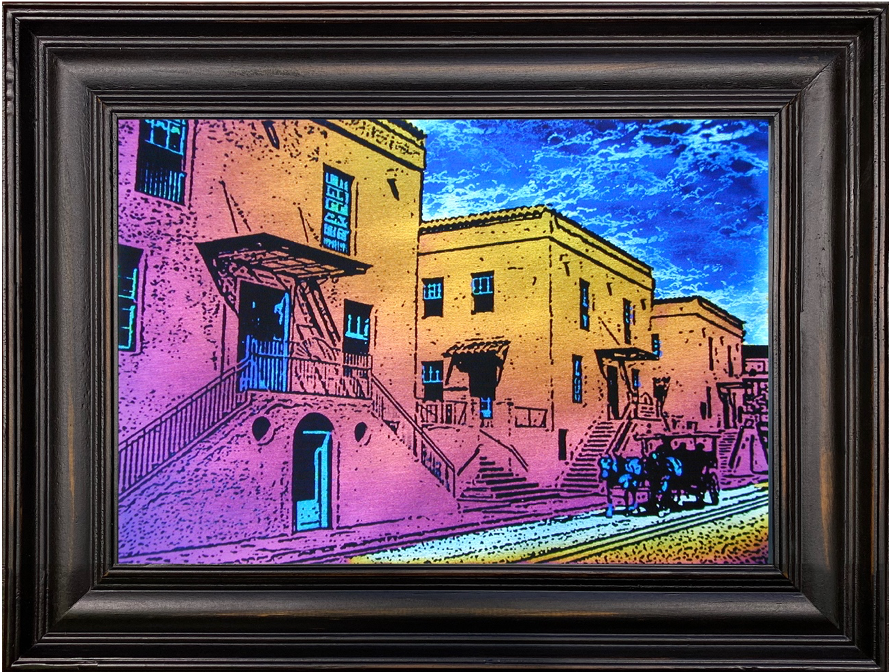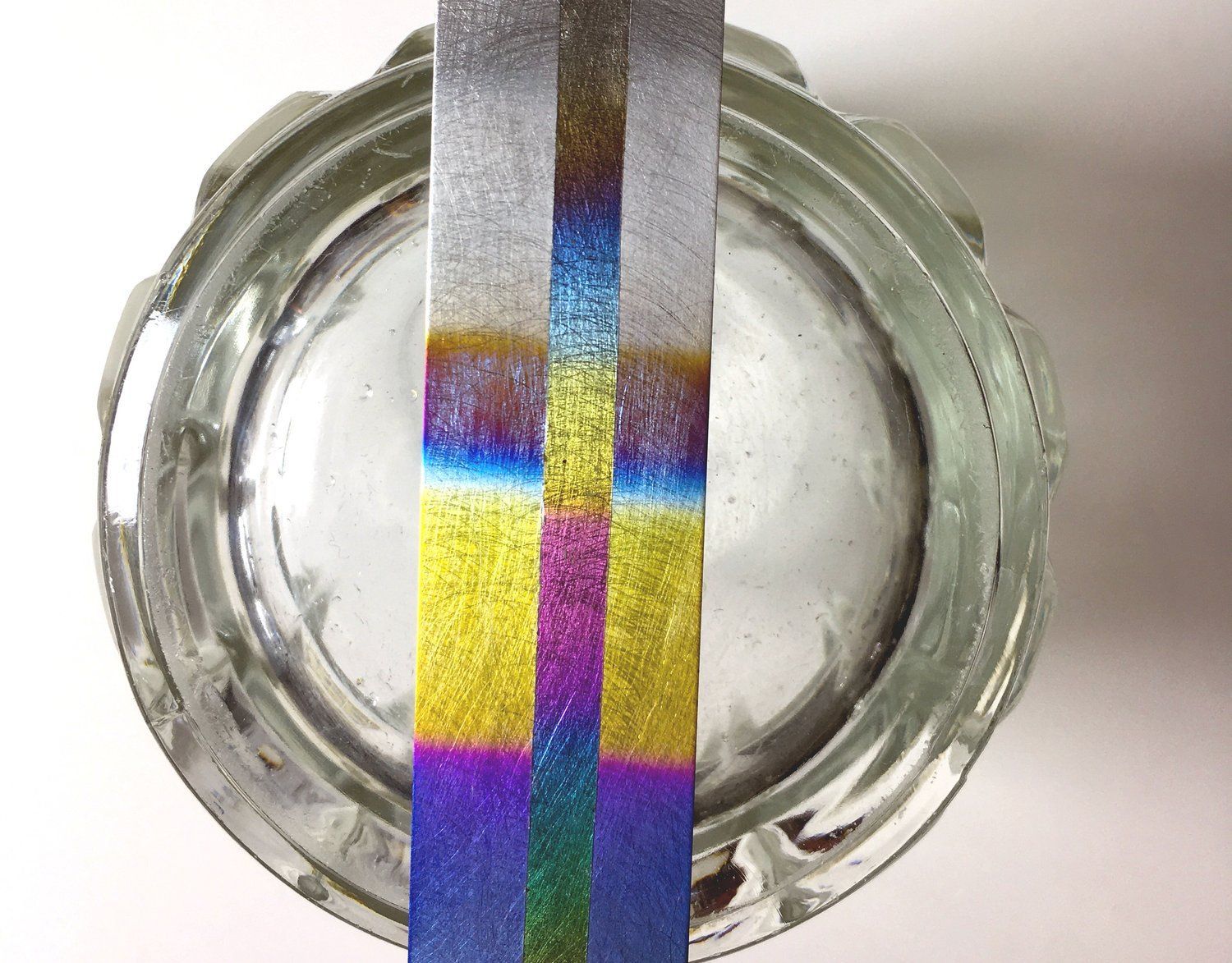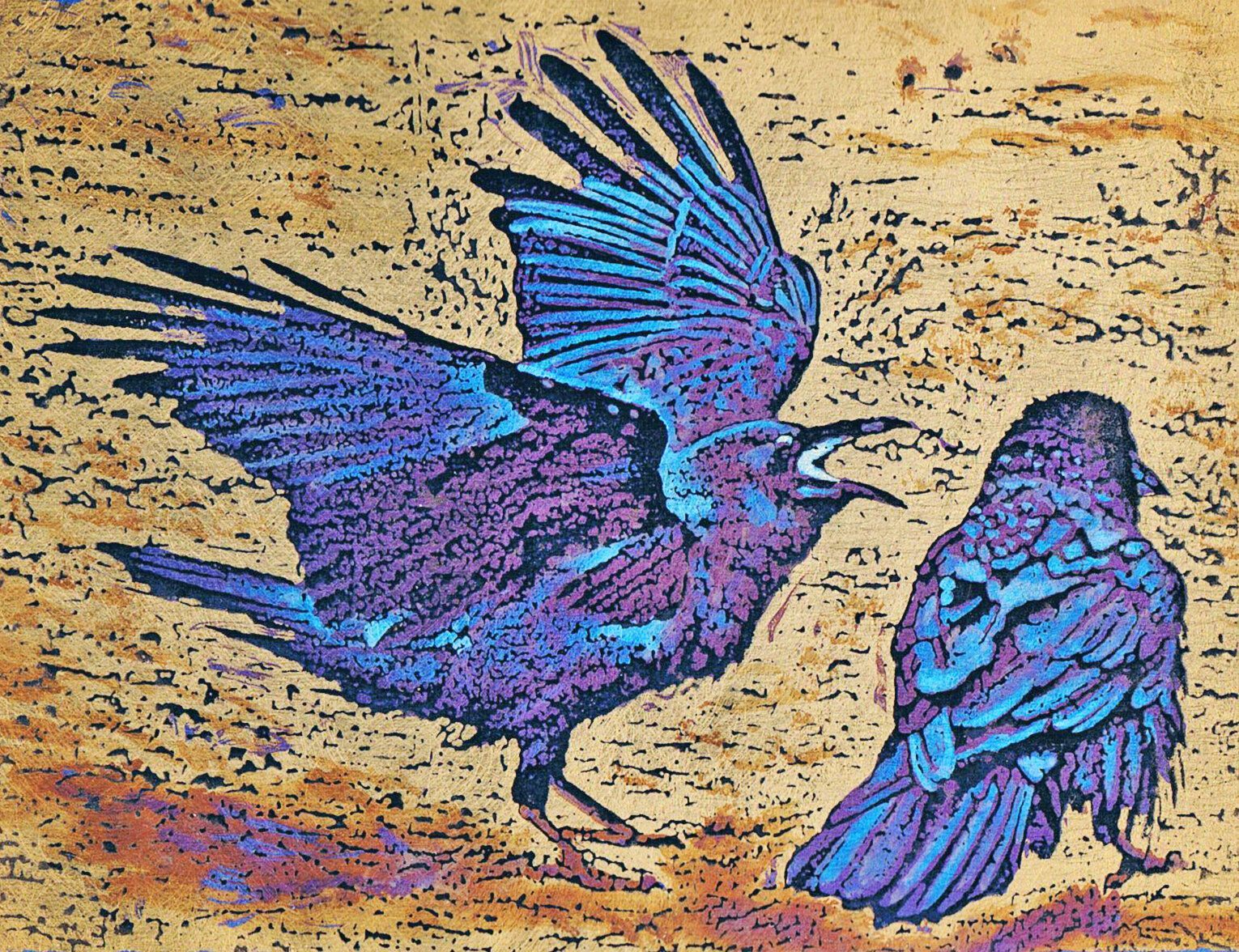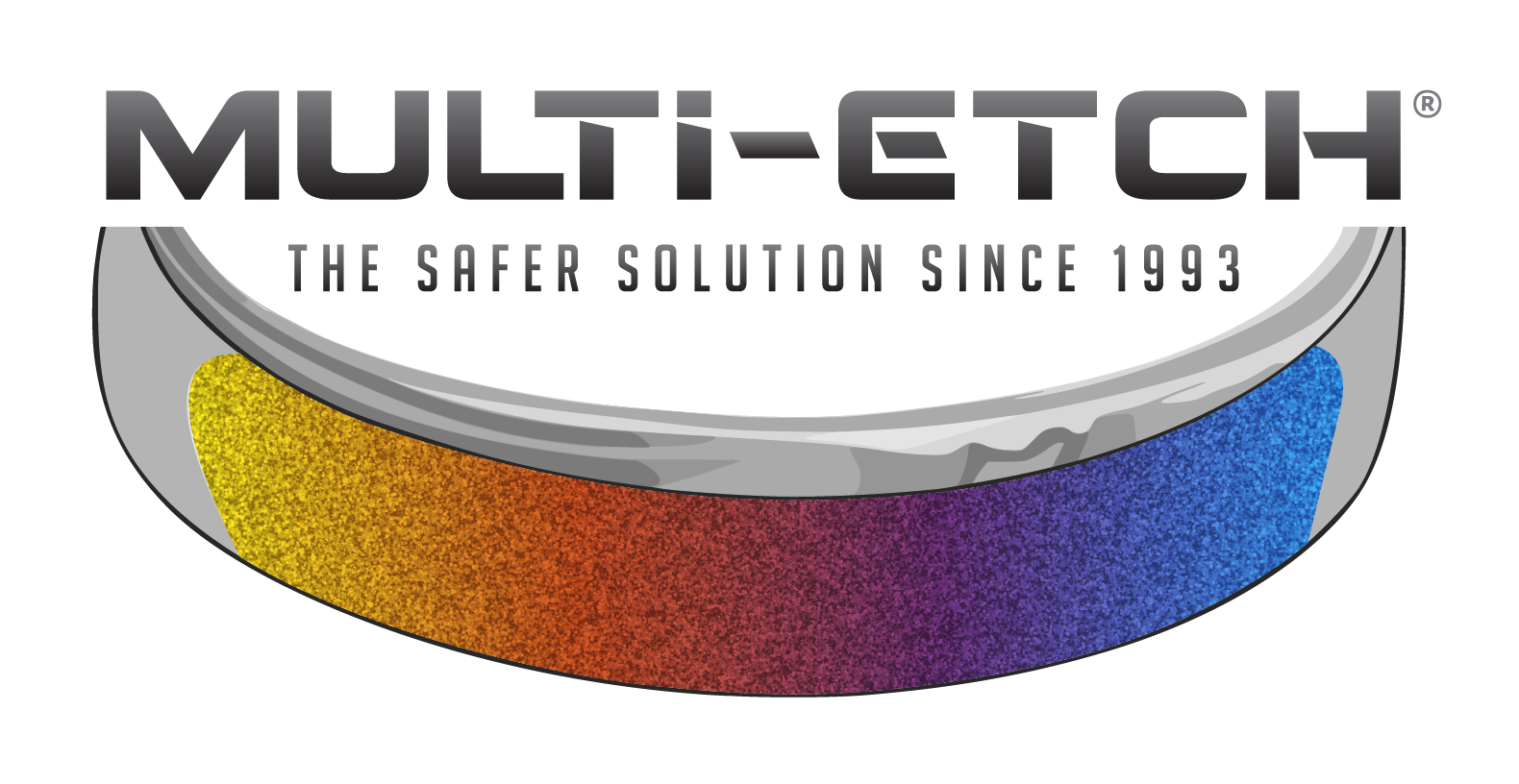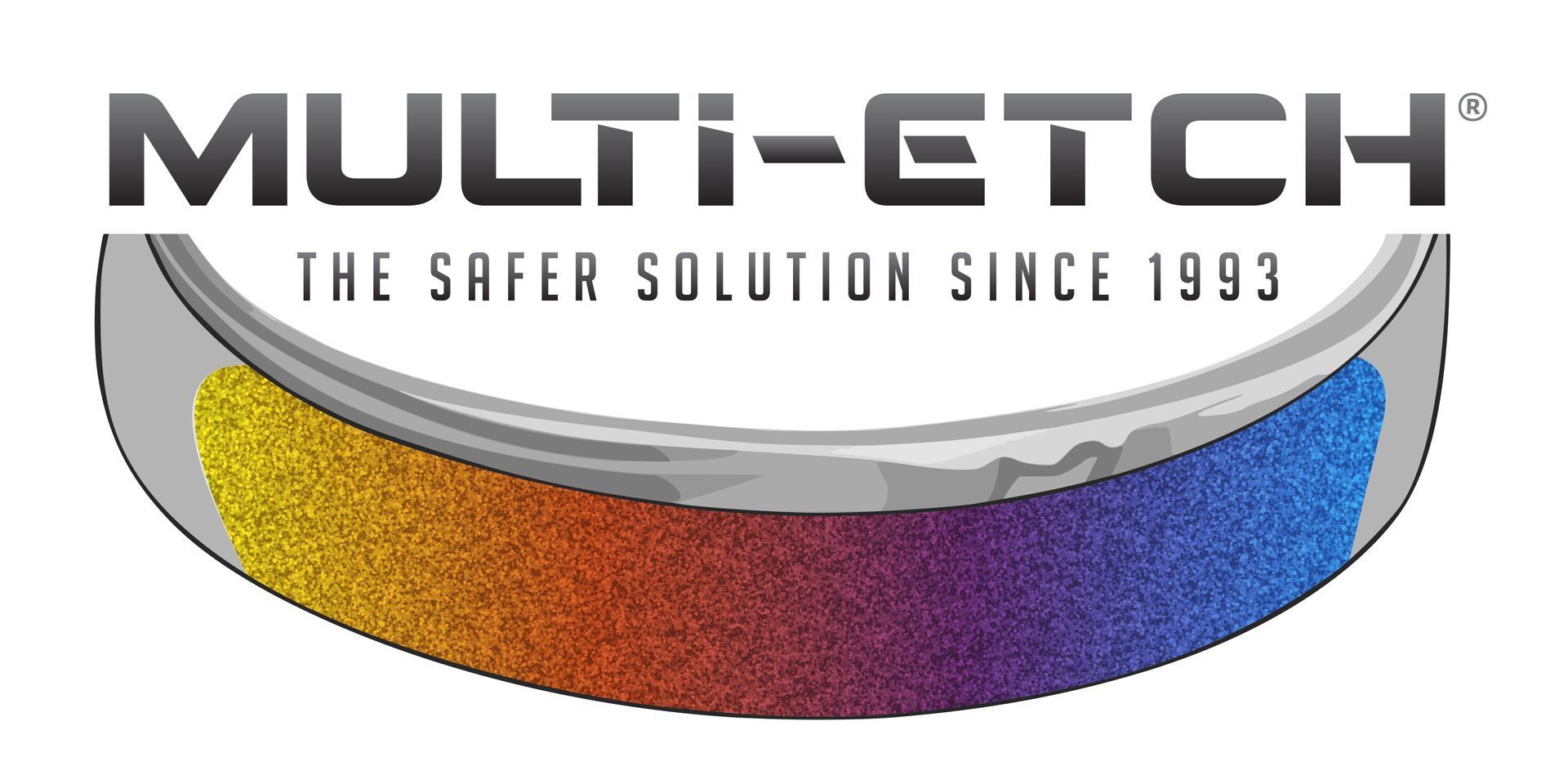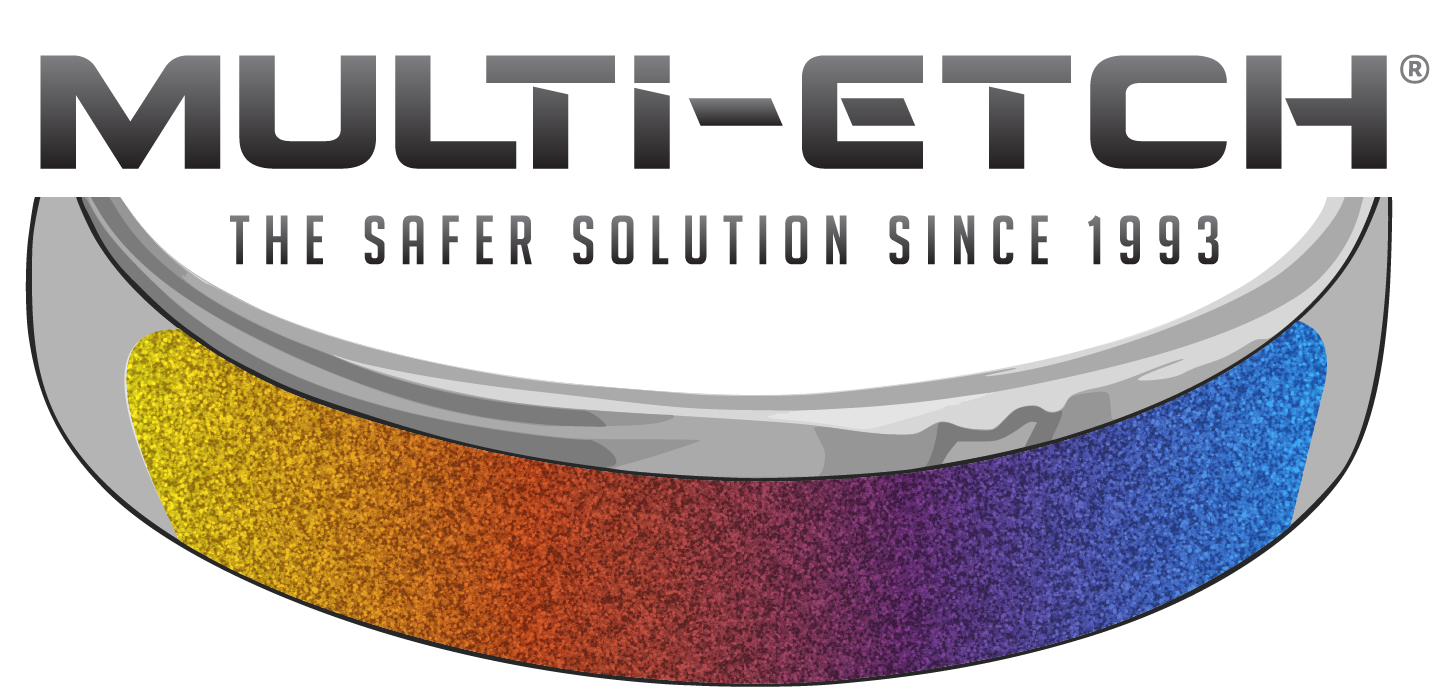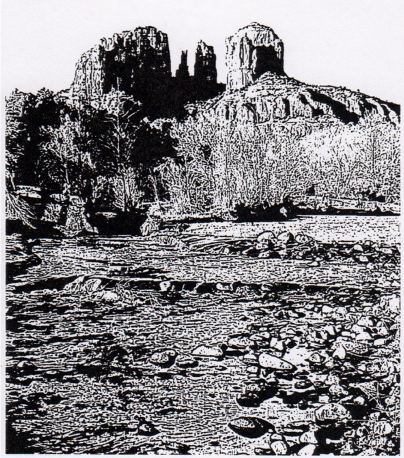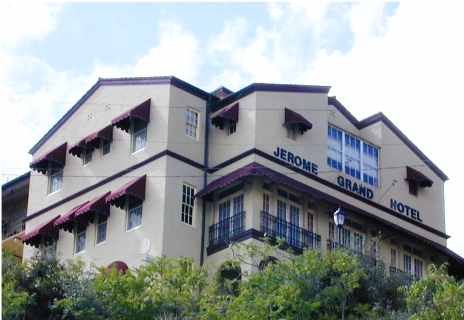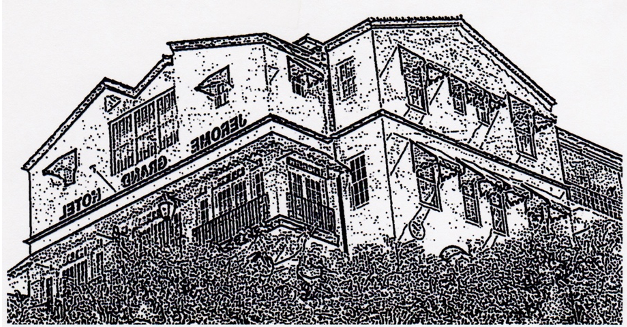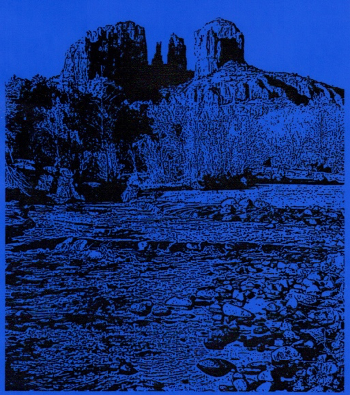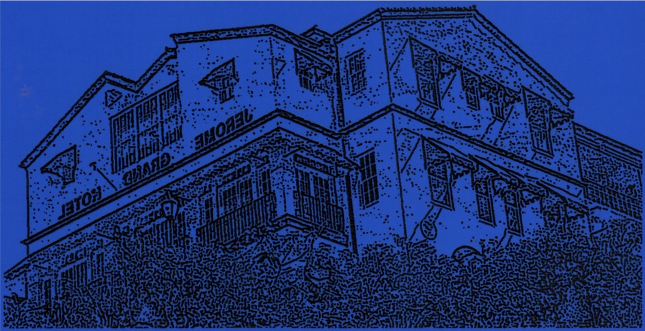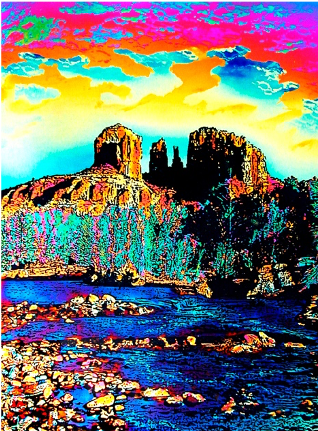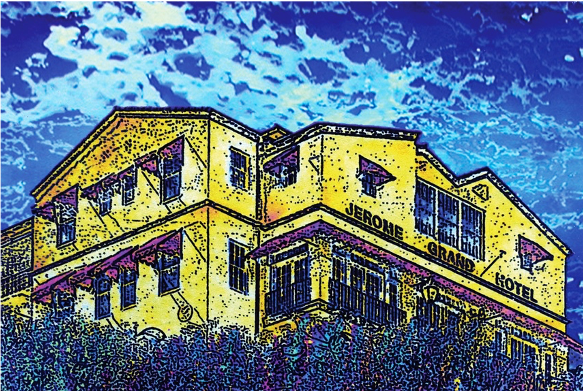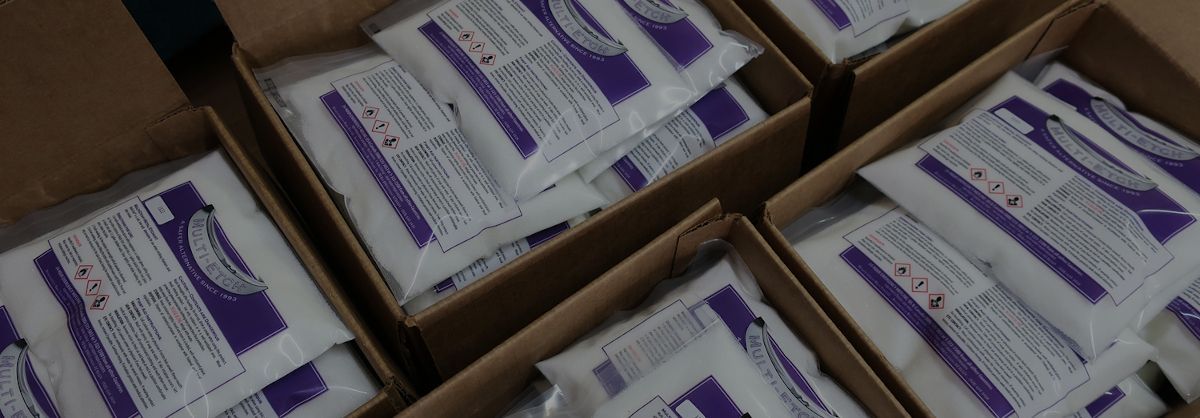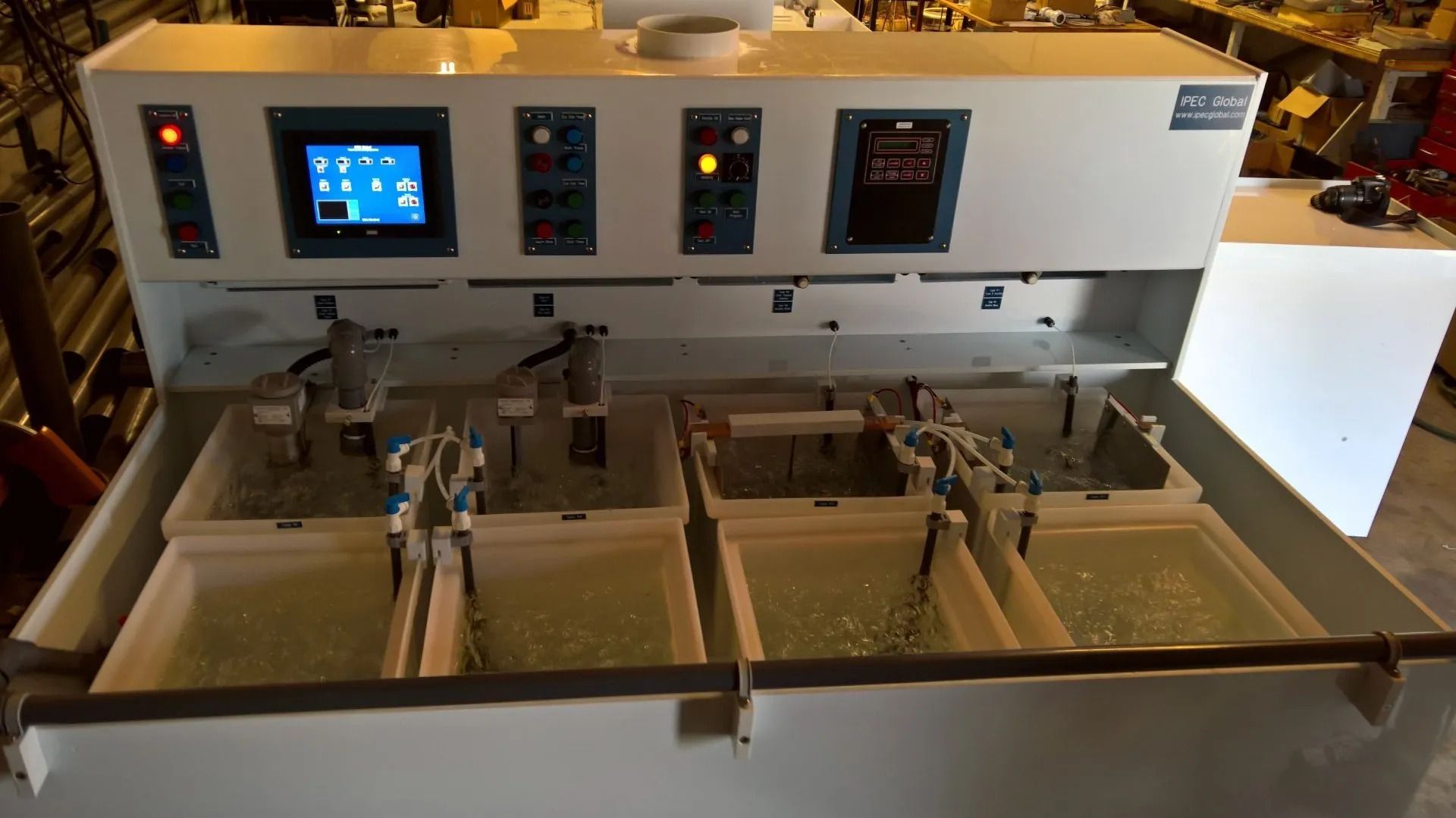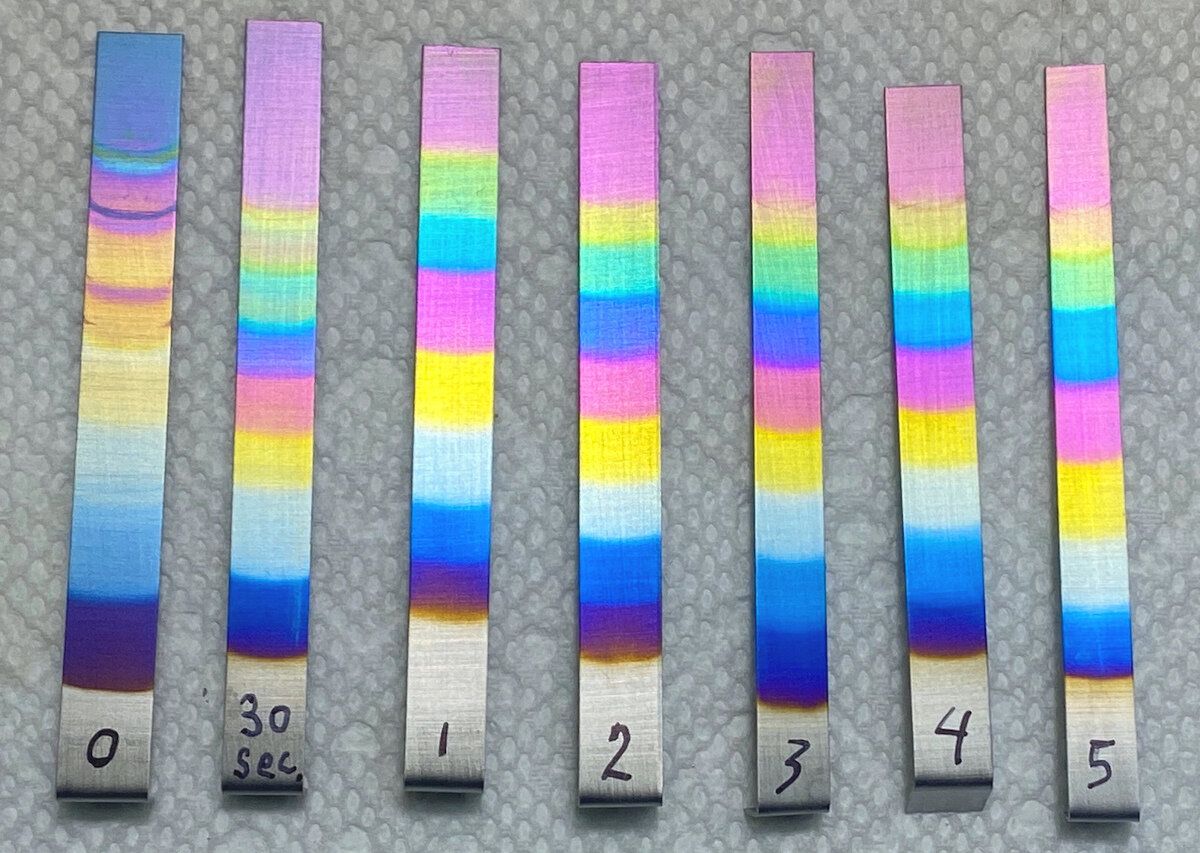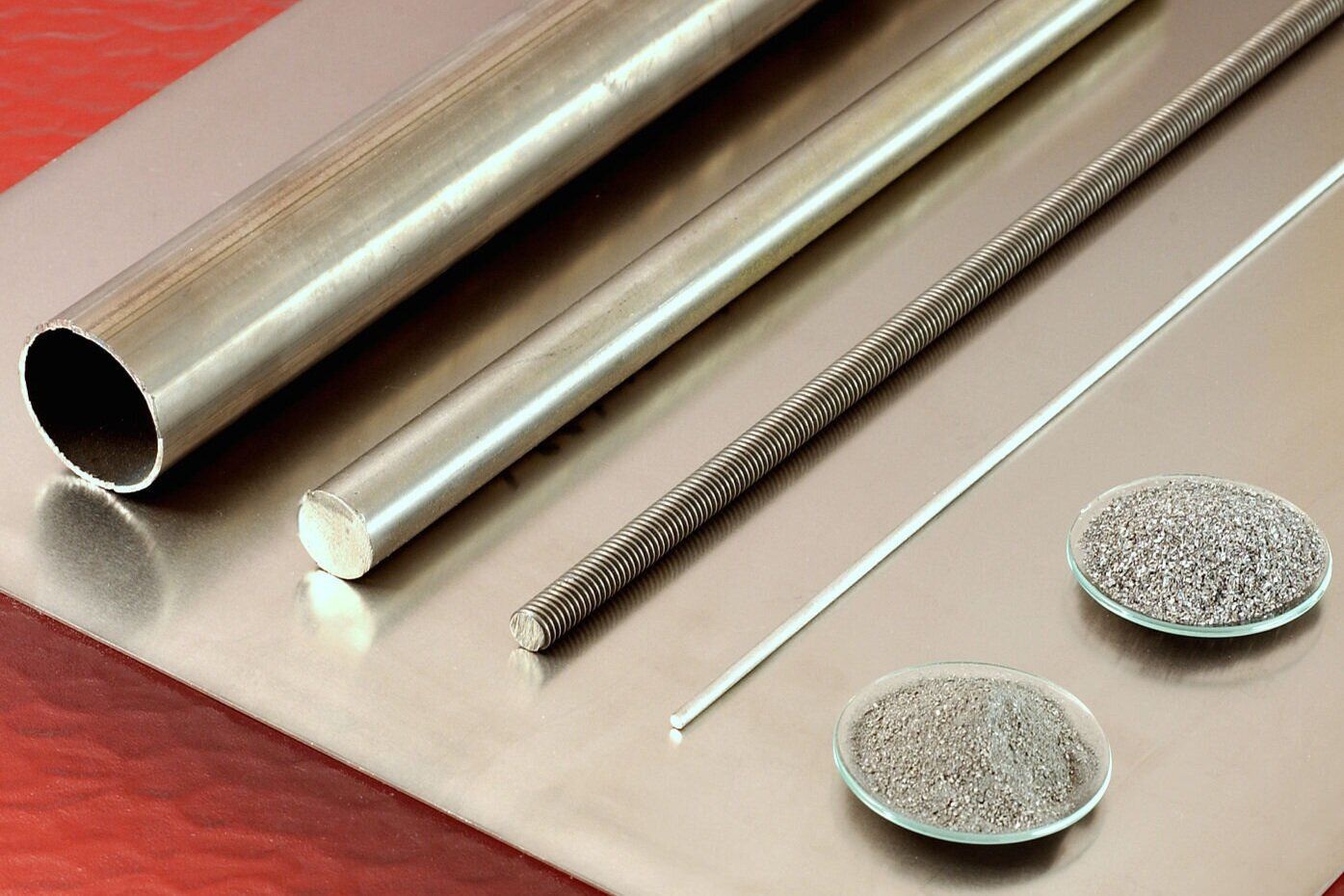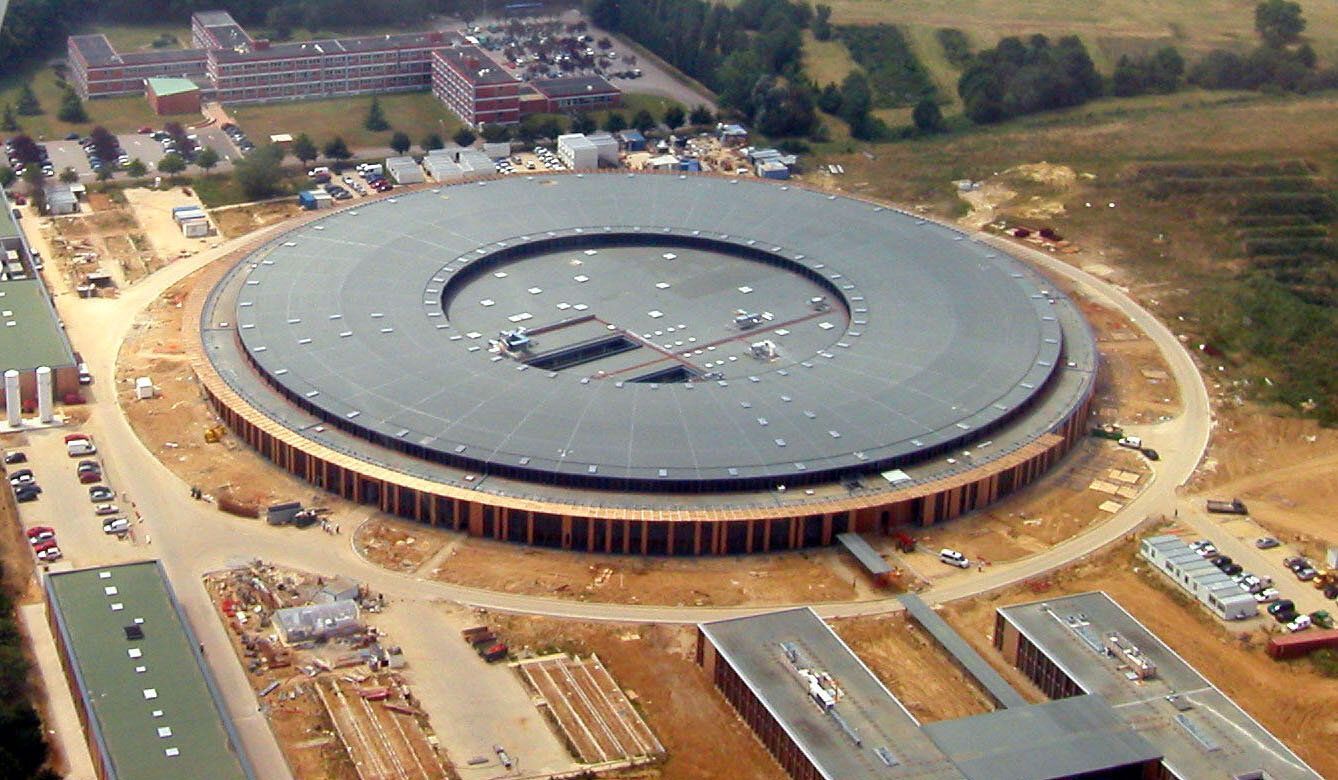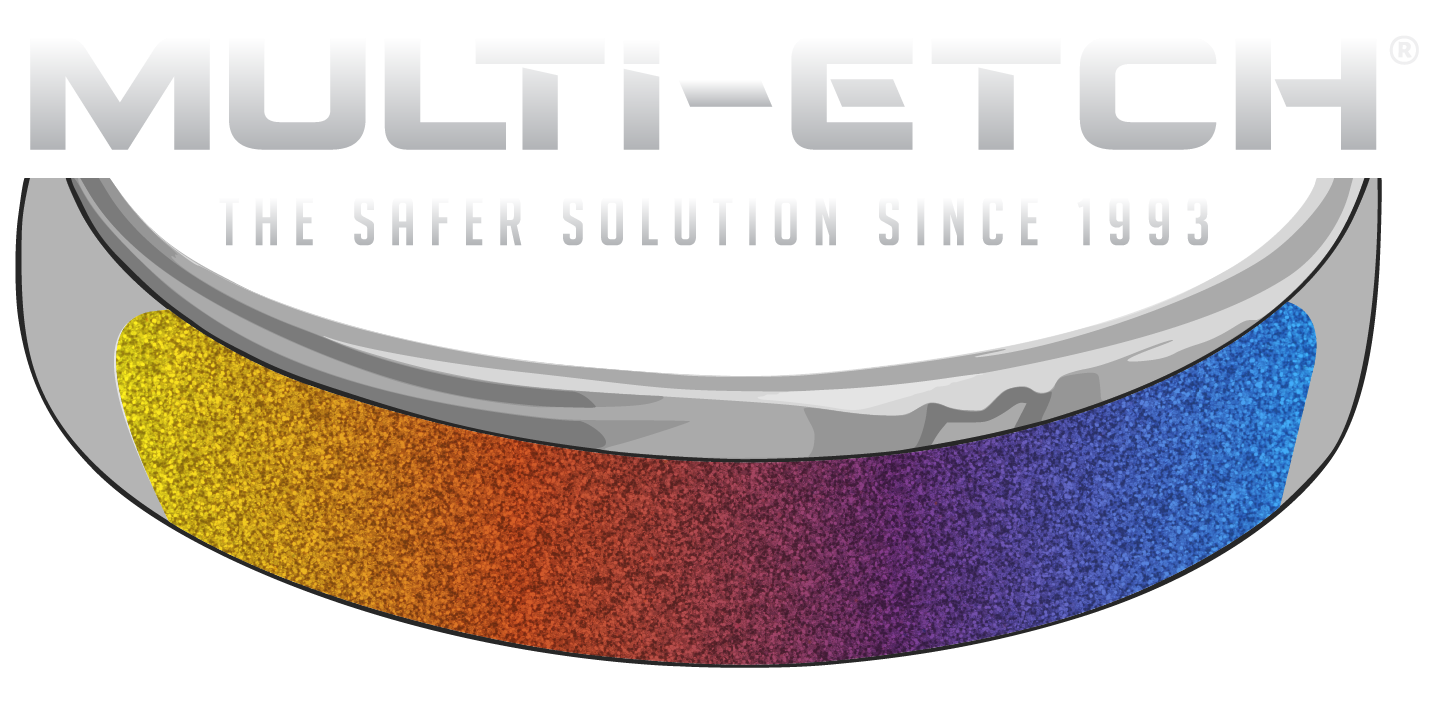Titanium Wall Art Using Multi-Etch
Chris and Sandy Boothe began their exploration into titanium when they first used it to make jewelry in the mid-1970's. After joining the Jerome (AZ) Artists Cooperative Gallery in 1999, they added titanium wall art. They wanted to make images of the buildings in Jerome, many of which were built in the late 1800's. Along the way they added outdoor images of the Sedona landscape.
Their first attempts weren't always what they wanted--they needed more definition around the important parts of the images. So, they investigated a masking material called Press-n-Peel Blue Transfer Film. They start by taking photos and then manipulate those photos in Photoshop until they have images that are black and white; gray doesn't work that well with this technique.
Stencil images must be reversed as the mirror image is what will end up on the finished piece.
Then they photocopy the black and white image onto the transfer film.
After cleaning a titanium sheet with Multi-Etch, they transfer the image onto the titanium by ironing the film using a lot of pressure. When the transfer is complete, the resulting image turns from blue to nearly black and is very durable.
Then they color the image with electricity. They use rubber cement to mask the areas they don't want to color and then anodize selected areas with a small paint brush wired to the power supply and dipped in an electrolytic bath. Another method they employ, especially when cloud images are needed, is to wire a sponge to the power supply and "print" cloud shapes.
After a final inspection and occasional voltage touch-up, the image is ready to be framed. A great feature of this process is that the created picture is archival--the colors will never fade.
